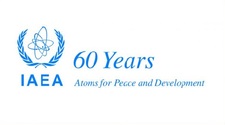
From 2009 to 2011, the IAEA organized a collaborative programme entitled Environmental Modelling for Radiation Safety (EMRAS II), which concentrated on the improvement of environmental transfer models and the development of reference approaches to estimate the radiological impacts on humans, as well as on flora and fauna, arising from radionuclides in the environment.
Different aspects were addressed by nine working groups covering three themes: reference approaches for human dose assessment, reference approaches for biota dose assessment and approaches for assessing emergency situations. Quintessa participated in Working Group 3, “Reference Models for Waste Disposal”.
This group worked towards the development of reference modelling approaches for assessing the radiological impact due to hypothetical releases of radionuclides from purpose built solid radioactive waste repositories to the biosphere. Since radionuclide releases from repositories may only occur in the far future, models needed to address potential changes to climate, land use, human habits and agricultural practices.
One of the models used in a quantitative soil-plant process modelling comparison was developed by CIEMAT (Pérez-Sánchez, et al., 2012) and was implemented in Quintessa’s AMBER software.
The final report of this working group has been published in August 2016, as part of the IAEA’s TECDOC Series (IAEA-TECDOC-1799).
The conclusions of this report have fed into the activities of Working Group 6 of the IAEA’s subsequent MODARIA programme, which has been working to develop a common framework for addressing environmental change in long term safety assessments of radioactive waste disposal facilities. Quintessa is actively involved in this working group. The follow-on programme, called MODARIA II, is due to kick-off at the end of October 2016 and participation is invited.